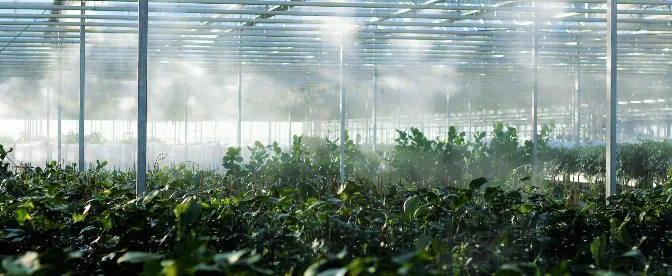- +62 85156306472
- office@muinu.co.id

In coffee cultivation, the post-harvest process is just as crucial as the growing phase. Among the various methods used, the integration of greenhouses in coffee processing has emerged as a game-changer. These structures are not merely shelters for plants; they play a pivotal role in ensuring the production of high-quality coffee through controlled drying techniques. This article delves into the functionality of greenhouses in coffee processing, underscoring their significance in achieving consistency and excellence in coffee production.
The primary function of a greenhouse in coffee processing is to aid farmers in drying coffee cherries with regulated temperature and humidity levels. This controlled environment facilitates a more uniform drying process, which is essential for maintaining the quality of the coffee beans. Traditional drying methods, which often depend on direct sunlight, are susceptible to the vagaries of weather, leading to inconsistent drying rates and, consequently, uneven coffee quality. Greenhouses, however, mitigate these challenges by offering a stable environment, ensuring that each bean dries at the same pace.
One exemplary case of greenhouse utilization in coffee processing is the development of the Coffee Drying Greenhouse by the School of Life Sciences and Technology (SITH) in the Gunung Geulis Coffee Farmer Community. This innovation is not only energy-efficient but also environmentally friendly. By harnessing solar energy, these greenhouses accelerate the drying process, speed up water evaporation, and enhance the overall quality of the coffee. The reliance on natural sunlight reduces the need for artificial heating sources, minimizing energy consumption and carbon footprint.
The controlled conditions within a greenhouse directly impact the quality of the dried coffee. Greenhouses help preserve the beans’ inherent flavors and aromas by ensuring a consistent drying process. This level of quality control is crucial for specialty coffee producers, who strive for excellence in every cup. Moreover, the reduced drying time in a greenhouse minimizes the risk of mold and fermentation, which are common issues in slower, traditional drying methods that can severely affect the coffee’s taste and safety.
Integrating greenhouses in coffee processing marks a significant advancement in agricultural technology. By providing a controlled environment for drying coffee cherries, these structures ensure the production of consistently high-quality coffee and contribute to energy conservation and environmental sustainability. As the coffee industry continues to evolve, the adoption of greenhouses in coffee processing is set to play a pivotal role in shaping the future of coffee production, promising a better cup of coffee for everyone.
©2024. PT. Multidaya Inovasi Nusantara. All Rights Reserved.
Click one of our contacts below to chat on WhatsApp
Or sent mail to office@muinu.co.id